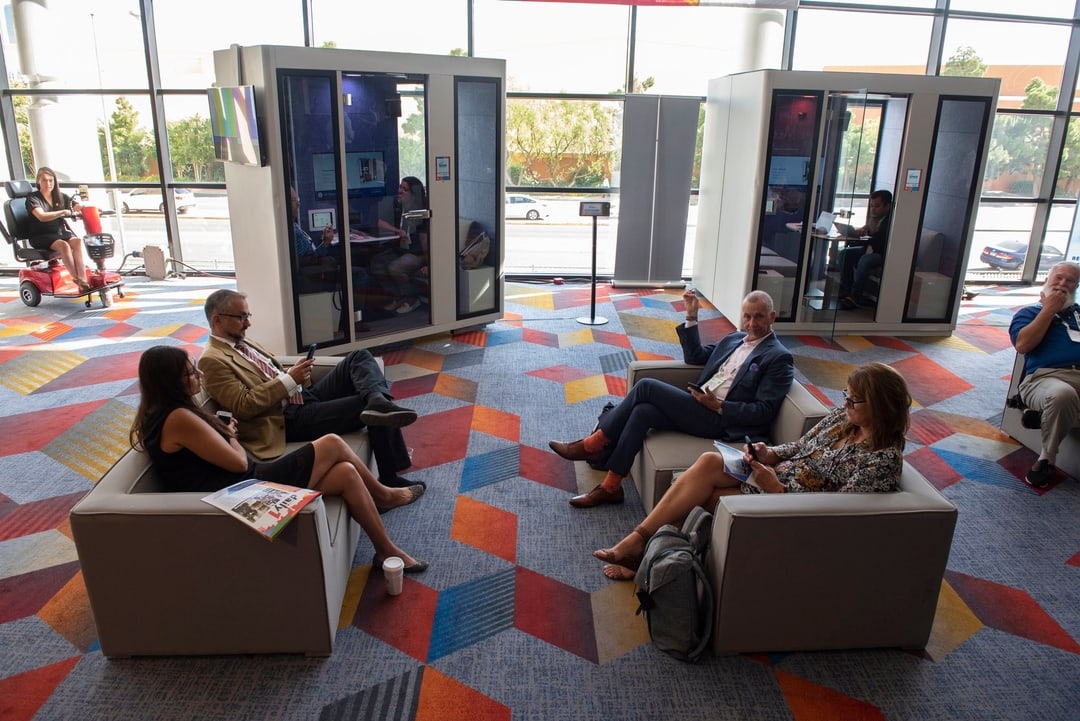Companies are shifting towards a focus on business outcomes, instead of workers sitting in a chair for nine hours. After the pandemic, business leaders will look to create stability and a new normal in terms of how people interact, where they work, and how they travel. Worker engagement and collaboration will improve, as people seek out more fulfilling jobs and see their work as part of a broader movement towards social good.
Managing Social Wellbeing Remotely
The pandemic forces company leaders to consider employee wellbeing in new ways. This means understanding how the pandemic and related quarantine rules impact the mental, physical and financial health of employees. Millions of employees underwent enormous stress throughout the pandemic, as they managed their work role with the demands of home schooling or acting as caregivers for relatives. Burnout will become a concern for a year or more after the pandemic ends, as employees will struggle to accept new normal, especially in situations where workplaces shifted from an office to home. Companies should expand their mental health service offerings and put in place resources to help employees manage stress and adapt to changing conditions.
After the pandemic, many firms will allow workers to work remotely, either in a full or part-time capacity. For example, Twitter and Square announced permanent shifts for most workers to at-home work. There’s societal, environmental, and productivity benefits to such a shift, but also pitfalls. A chief concern is the reduced social interaction. In-office workers interact with each other socially for significant parts of the average day. Work friendships are meaningful and often long-lasting and moving these interactions to virtual videoconferencing will have profound effects. Companies will not want to lose the benefits of in-person interaction such as brainstorming sessions and feelings of “belonging” that translate into improved employee performance. And there are productivity tradeoffs. Instead of resolving a question with a 30-second chat, remote workers might use email communications that can warp tone and intent or schedule an unnecessary 15-minute Zoom.
The broader shift to working remotely and leveraging video and other collaboration tools will also dovetail into changing the ways businesspeople travel and connect with partners and customers.
Creating New Workspaces
Forward thinking companies will consider technology tools as complements (instead of replacements) for people. These firms will use tech to manage costs and remove some tedious tasks from employee’s hands, while expanding usage of tech to help people find innovations and new ways to improve the customer experience.
At ZenSpace, we provide turn-key workplace solutions that provide options for both employers and freelancers operating in a post-pandemic reality. Our pods feature smart tech such as locks and secure Wi-Fi hotspots, as well as various environmental controls. Integrated screens allow users to see presentations in greater detail and share content with in-person and virtual colleagues. The wheeled pods fit various locations, and feature noise reduction, internal air circulation and LED lighting for maximum user comfort.
We also provide flexible workspace lounge setups for smaller spaces, that include technology access, coffee and snack machines, and other capabilities. These lounges are ideal for underutilized spaces including convention centers, hotel lobbies, shopping malls, and other areas where workers could use a dedicated constructive area. The proliferation of shared workspaces coincides with venues such as event halls and hotels needing additional revenue streams after COVID-19.
A Closer Eye on Business Travel
As the pandemic ends, many consumers will explore traveling to return to a feeling of normalcy and shake off the constraints of quarantine. Business travel will take longer to restart and is unlikely to reach pre-pandemic levels. C-suite executives will look closer at business travel as a cost center. They have participated in hundreds of Zoom meetings during the pandemic, making them attuned to the possibilities of video conferencing. Managers will need to present stronger cases for the necessity of travel, especially for longer costlier trips. And of course, the current state of COVID-19 will dictate travel as well. If the pandemic is over, but some cases still occur and a vaccine is not available, then there’s still relevant risks companies will need to consider.
Over time, firms will balance replacing in-person meetings with video against the benefits of human interaction. For example, will sales teams report decreased success in closing if they cannot showcase a product or solution’s benefits in person? Will CEOs engage their employees in “all-hands” virtual, instead of bringing in employees from around the country together?
The future of work after the pandemic will remain dynamic, as it has for hundreds of years. The coming years will see hybrid approach develop, consisting of remote workers, usage of small spaces for workspaces, and limited business travel, all leading to improved work-life balances for millions of workers.


